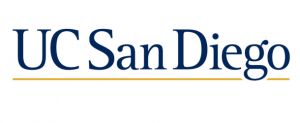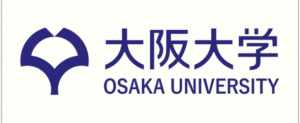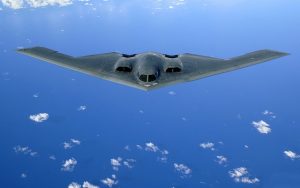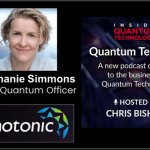Quantum News Briefs August 9: Q-CTRL becomes 1st independent quantum software vendor to achieve ISO 27001 certification; Military planes should be built with quantum technology in mind: UK official; Quantum material exhibits ‘non-local’ behavior that mimics brain function + MORE
By
Sandra Helsel posted 09 Aug 2023
Quantum News Briefs August 9:
Q-CTRL becomes 1st independent quantum software vendor to achieve ISO 27001 certification
 Q-CTRL, a global leader in developing useful quantum technologies through quantum control infrastructure software, today announced that it has achieved ISO/IEC 27001:2022 certification, making Q-CTRL the first independent software vendor (ISV) in the quantum technology sector to obtain this internationally recognized standard. Quantum News Briefs summarizes.
Q-CTRL, a global leader in developing useful quantum technologies through quantum control infrastructure software, today announced that it has achieved ISO/IEC 27001:2022 certification, making Q-CTRL the first independent software vendor (ISV) in the quantum technology sector to obtain this internationally recognized standard. Quantum News Briefs summarizes.
ISO 27001 outlines best practices for information security management system (ISMS) implementation. Conformity with this International Standard means that an organization or business has put in place a system to manage risks related to the security of data owned or handled by the company, and that this system respects all relevant best practices and principles. In many cases it is a mandatory precondition for commercial engagement with large vendors.
The policies and controls Q-CTRL enacted in obtaining ISO 27001 certification strengthen the company’s position as a trusted partner delivering software products to the quantum tech industry and quantum computing end-users.
The independent ISO certification of robust security infrastructure and practices provides assurance to current and prospective customers: Q-CTRL’s commitment to data security reaches the highest level of internationally recognized standards. Q-CTRL is now ISO-compliant company wide, specifically in countries where their offices host employees, notably the United States, Australia, and Germany.
“Achieving ISO 27001 certification is a significant milestone for Q-CTRL. It formalizes the emphasis on professional product engineering, delivery, and security that sets QCTRL’s products apart in the sector. As we work with some of the largest tech enterprises in the world, it’s crucial for us to ensure our security practices are at global standard,” said Matthew Rogers, Head of Operations of Q-CTRL. Click here to read the announcement in-entirety.

Quantum Materials for Energy Efficient Neuromorphic Computing (Q-MEEN-C)—a nationwide consortium led by the University of California San Diego—has been at the forefront of research to create
brain-like computers with minimal
energy requirements would revolutionize nearly every aspect of modern life. Quantum News Briefs summarizes August 8 article in Phys.org.
UC San Diego Assistant Professor of Physics Alex Frañó is co-director of Q-MEEN-C and thinks of the center’s work in phases. In the first phase, teams were successful in finding ways to create or mimic the properties of a single brain element (such as a neuron or synapse) in a quantum material. New research from Q-MEEN-C, published in
Nano Letters, shows that electrical stimuli passed between neighboring electrodes can also affect non-neighboring electrodes. Known as non-locality, this discovery is a crucial milestone in the journey toward new types of devices that mimic brain functions known as neuromorphic computing.
“In the brain it’s understood that these non-local interactions are nominal—they happen frequently and with minimal exertion,” said Frañó. “It’s a crucial part of how the brain operates, but similar behaviors replicated in synthetic materials are scarce.
To date, recognition tasks that the brain executes so beautifully,can only be simulated through computer software. AI programs like ChatGPT and Bard use complex algorithms to mimic brain-based activities like thinking and writing. And they do it really well. But without correspondingly advanced hardware to support it, at some point software will reach its limit.
Frañó is eager for a hardware revolution to parallel the one currently happening with software, and showing that it’s possible to reproduce non-local behavior in a synthetic material inches scientists one step closer. The next step will involve creating more complex arrays with more electrodes in more elaborate configurations.
“It’s widely understood that in order for this technology to really explode, we need to find ways to improve the hardware—a physical machine that can perform the task in conjunction with the software,” Frañó stated. “The next phase will be one in which we create efficient machines whose
physical properties are the ones that are doing the learning. That will give us a new paradigm in the world of artificial intelligence.
Click here to read complete article in Phys.org.
Are quantum computers the future of genome analysis?

DNA sequencing technology, i.e., determining the order of nucleotide bases in a DNA molecule, is central to personalized medicine and disease diagnostics, yet even the fastest technologies require hours, or days, to read a complete sequence. Now, a multi-institutional research team led by The Institute of Scientific and Industrial Research (SANKEN) at Osaka University, has developed a technique that could lead to a new paradigm for genomic analysis. Quantum News Briefs summarizes.
In a study recently published in the Journal of Physical Chemistry B, the researchers aimed to use a quantum computer to distinguish adenosine from the other three nucleotide molecules. Using quantum encoding to identify single nucleotide molecules is a necessary first step toward the ultimate goal of DNA sequencing, and it’s this problem that the researchers sought to address.
“Using a quantum circuit, we show how to detect a nucleotide from only the measurement data of a single molecule,” explains Masateru Taniguchi, lead author of the study. “This is the first time a quantum computer has been connected to measurement data for a single molecule, and demonstrates the feasibility of using quantum computers in genome analysis.”
The researchers used electrodes with a nanoscale gap between them to detect single nucleotides. The output of current versus time for the adenosine monophosphate nucleotide differed from that of the other three nucleotides. This is because the conduction path of electrons between the nucleotide and the electrodes depends on the chemical architecture of the nucleotide. This is the basis for designing a quantum gate, which that serves as a molecular fingerprint for each nucleotide.
This work has broad and exciting potential applications: advances in drug discovery, cancer diagnosis, and infectious disease research are a few examples of what is expected with the advent of ultra-fast genome analysis. Click here to read the July 31 Eureka Alert announcement in-entirety.
Sandra K. Helsel, Ph.D. has been researching and reporting on frontier technologies since 1990. She has her Ph.D. from the University of Arizona.
 Western nations need to be designing their next-gen aircraft with the ability to use that technology when its ready, the UK’s Minister of State for the Armed Forces, James Heappey said in his keynote address at the Global Air Chiefs conference in London in mid-July. Quantum News Briefs summarizes Andrew White’s article in Breaking Defense.
Western nations need to be designing their next-gen aircraft with the ability to use that technology when its ready, the UK’s Minister of State for the Armed Forces, James Heappey said in his keynote address at the Global Air Chiefs conference in London in mid-July. Quantum News Briefs summarizes Andrew White’s article in Breaking Defense.







 Q-CTRL
Q-CTRL Quantum Materials for Energy Efficient Neuromorphic Computing (Q-MEEN-C)—a nationwide consortium led by the University of California San Diego—has been at the forefront of research to create
Quantum Materials for Energy Efficient Neuromorphic Computing (Q-MEEN-C)—a nationwide consortium led by the University of California San Diego—has been at the forefront of research to create 














